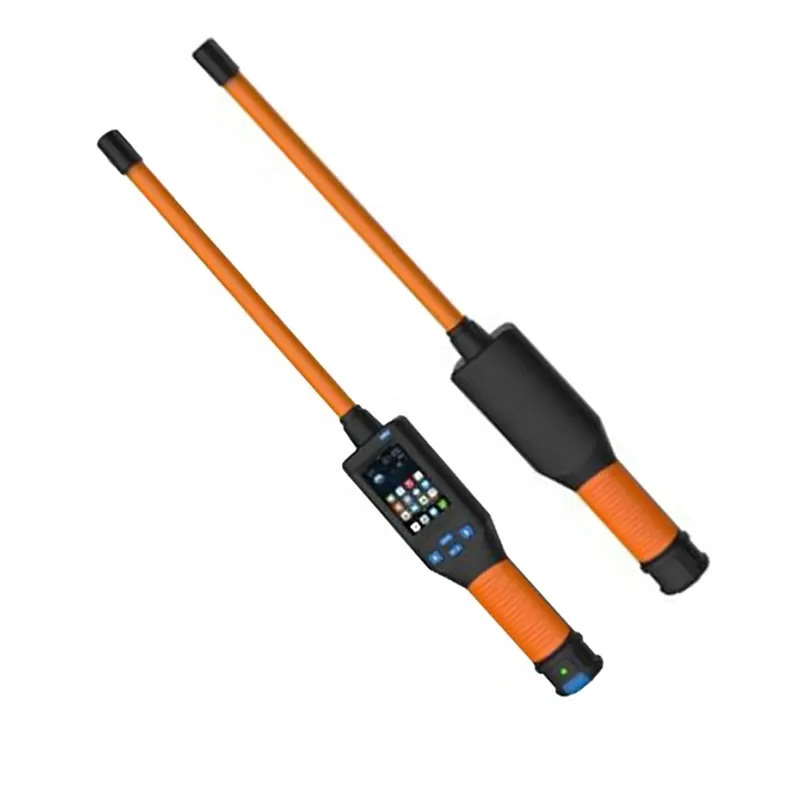- 20
- Apr
Introducing the Handheld Stick Reader – A Convenient Tool for EID Tag Reading,

Introduction:
The use of Electronic Identification (EID) tags has revolutionized livestock management, making it easier to track and monitor animals in a more efficient and accurate manner. One of the essential tools for reading EID tags is the handheld stick reader, also known as the EID stick reader. In this article, we will explore the advantages, disadvantages, and best practices of using a handheld stick reader for EID tag reading.
Advantages of Handheld Stick Reader:
Portability: The handheld stick reader is designed to be lightweight and easy to carry, allowing livestock managers to easily move around and read EID tags in different locations without much hassle.
Convenience: The handheld stick reader is a user-friendly device with a simple and intuitive interface, making it easy to use for both experienced and novice users. It typically has a clear display screen that provides instant feedback on the tag reading results.
Versatility: Handheld stick readers are compatible with various types of EID tags, including both RFID (Radio-Frequency Identification) and visual tags. This makes them suitable for use with different types of animals, such as cattle, sheep, goats, and pigs.
Data Management: Many handheld stick readers are equipped with data storage capabilities, allowing users to record and store tag reading information for later analysis. This can be useful for monitoring animal health, tracking animal movements, and managing livestock inventory.
Disadvantages of Handheld Stick Reader:
Limitations in Reading Distance: Handheld stick readers typically have a limited reading range, which means that the user needs to be in close proximity to the animal to read the EID tag. This can be challenging in situations where animals are difficult to approach or in large herds where animals are closely packed together.
Reliance on Battery Power: Handheld stick readers are powered by batteries, and the battery life can vary depending on the model and frequency of use. Users need to ensure that the device has sufficient battery power before going out to the field and may need to carry extra batteries or chargers for extended use.
Environmental Factors: The performance of handheld stick readers can be affected by environmental factors such as extreme temperatures, moisture, and interference from other electronic devices. Users need to take these factors into consideration when using the device in different environments to ensure reliable tag reading results.
Best Practices for Using Handheld Stick Reader:
Familiarize yourself with the user manual: Each handheld stick reader may have its own specific instructions for use, so it’s important to read and understand the user manual before operating the device.
Practice proper tag placement: EID tags should be properly applied to the animals according to the manufacturer’s recommendations to ensure accurate and reliable tag reading results. Improper tag placement can affect the readability of the tag and may require additional effort to read.
Maintain clean and dry conditions: Keep the handheld stick reader clean and dry to prevent dirt, dust, and moisture from affecting its performance. Regularly clean the device and store it in a dry and safe place when not in use.
Perform regular calibration: Some handheld stick readers may require periodic calibration to maintain accurate tag reading results. Follow the manufacturer’s instructions for calibrating the device and perform regular maintenance as recommended.
Conclusion:
The handheld stick reader is a valuable tool for livestock managers to efficiently read EID tags and manage their livestock. Despite its limitations, the advantages of portability, convenience, versatility, and data management make it a popular choice for many farmers and ranchers. By following best practices and taking into consideration the disadvantages and limitations, the handheld stick reader can be a reliable and effective tool in modern livestock management practices. It provides valuable data for monitoring animal health, tracking animal movements, and managing inventory. However, users should be mindful of the reading distance limitations, reliance on battery power, and environmental factors that may affect its performance. Regular calibration, proper tag placement, and maintaining clean and dry conditions are important practices to ensure optimal performance of the handheld stick reader. With proper care and usage, the handheld stick reader can greatly enhance the efficiency and accuracy of EID tag reading, making it an indispensable tool for modern livestock management.
eid stick reader, handheld stick reader, hand held EID tag reader, China factory manufacturer supplier, eid reader, stick reader, mandatory id, stick readers, eid tag reader, handheld stick reader China manufacturer, electronic tag, sticker cattle, eid stick reader China factory, RFID cattle tag, stick reader yt, hand held EID tag reader China factory, portable readers, eid panel reader, stick reader zero, animal rfid reader, EID handheld reader, cattle stick reader, stick reader cattle, electronic ID reader, hand held EID tag reader China factory, eid reader and tags, eid stick reader China factory, electric stick reader animal ID hand reader,handheld stick reader China factory
